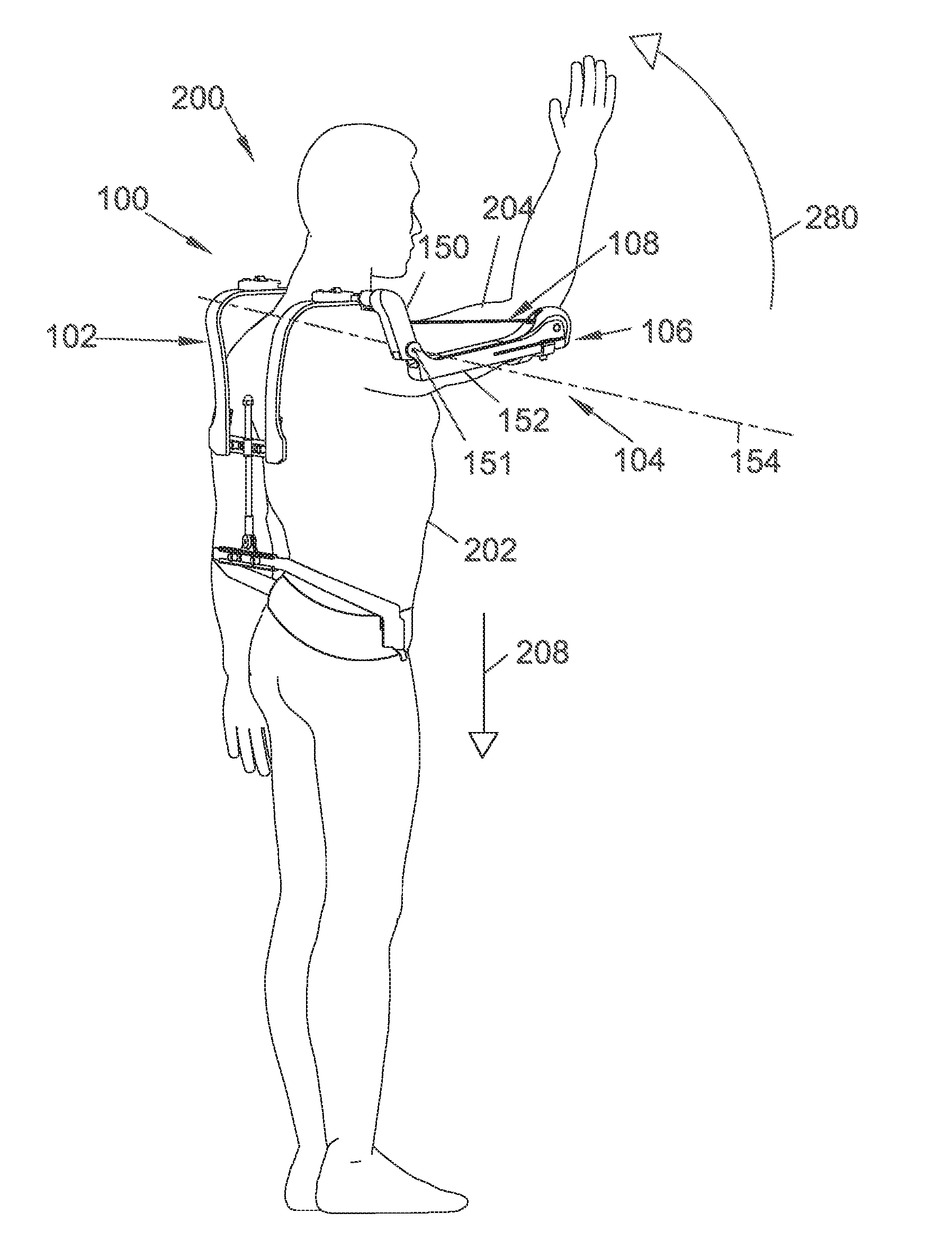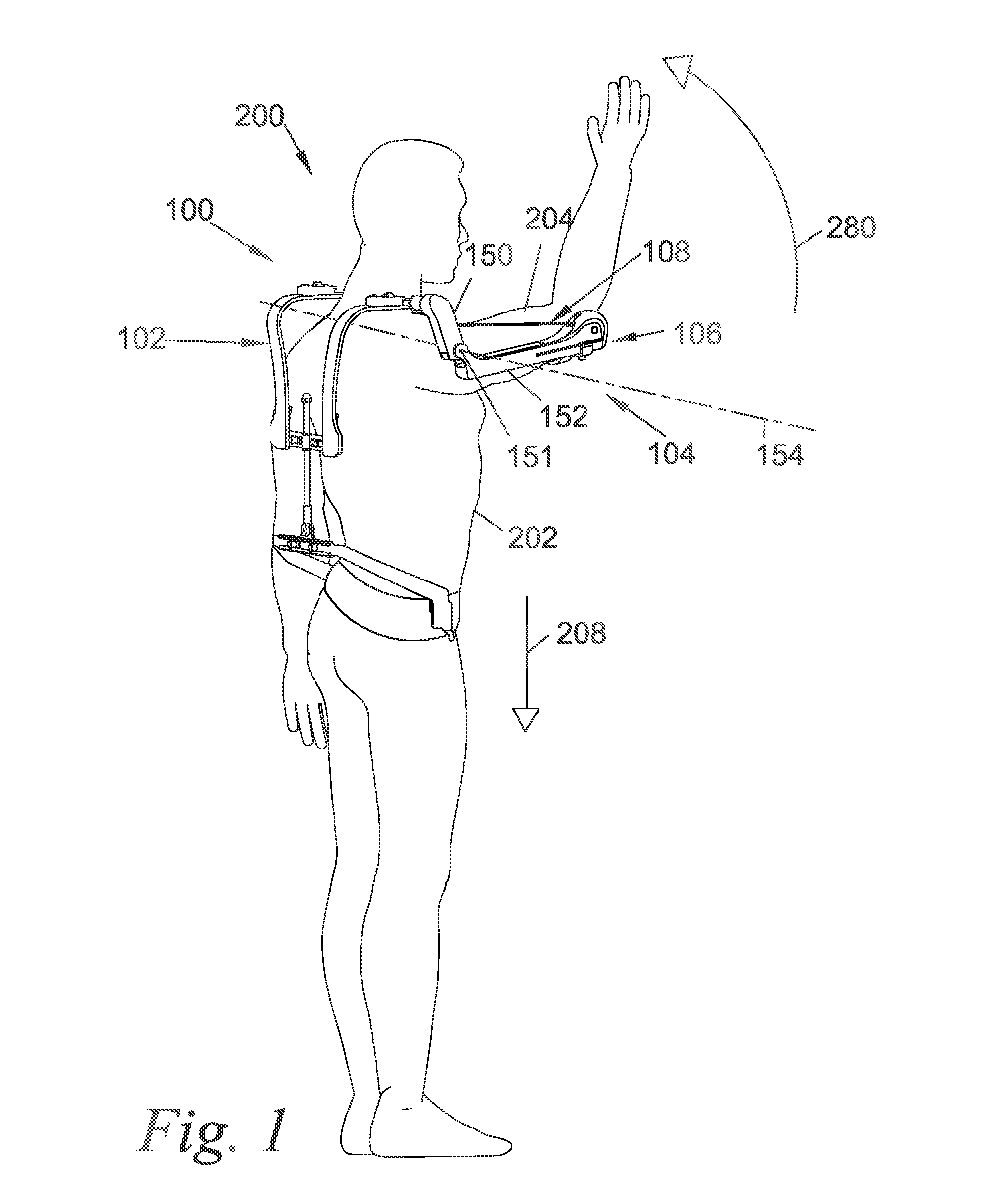Method and apparatus for human arm supporting exoskeleton
a technology of human arm and support device, applied in the direction of program-controlled manipulators, thin material processing, article separation, etc., can solve the problems of automatic cutting or substantially reducing the assistance of devices, limiting the range of position of devices, and not providing sustained range of position, so as to reduce the force and torque of human shoulders, and improve the overall comfort of users
- Summary
- Abstract
- Description
- Claims
- Application Information
AI Technical Summary
Benefits of technology
Problems solved by technology
Method used
Image
Examples
Embodiment Construction
[0073]FIG. 1 depicts an embodiment of an arm support exoskeleton (assist device) 100. Arm support exoskeleton 100 comprises a shoulder base 102, which is configured to be coupled to a person's trunk 202. In some embodiments of the invention, shoulder base 102 is substantially located behind a person (user) 200. Arm support exoskeleton 100 additionally comprises at least one arm link mechanism 104 that is coupled to shoulder base 102. Arm link mechanism 104 comprises at least a proximal link 150 and a distal link 152 capable of rotation relative to each other along a first rotational axis 154. In some embodiments of the invention, first rotational axis 154 is orthogonal to the gravity line 208 when person 200 in standing upright. The term “gravity line” should be understood to mean the direction in which gravity acts. A first joint 151 represents a hinge where distal link 152 rotates relative to proximal link 150. Arm support exoskeleton 100 additionally comprises at least one arm co...
PUM
 Login to View More
Login to View More Abstract
Description
Claims
Application Information
 Login to View More
Login to View More - R&D
- Intellectual Property
- Life Sciences
- Materials
- Tech Scout
- Unparalleled Data Quality
- Higher Quality Content
- 60% Fewer Hallucinations
Browse by: Latest US Patents, China's latest patents, Technical Efficacy Thesaurus, Application Domain, Technology Topic, Popular Technical Reports.
© 2025 PatSnap. All rights reserved.Legal|Privacy policy|Modern Slavery Act Transparency Statement|Sitemap|About US| Contact US: help@patsnap.com



